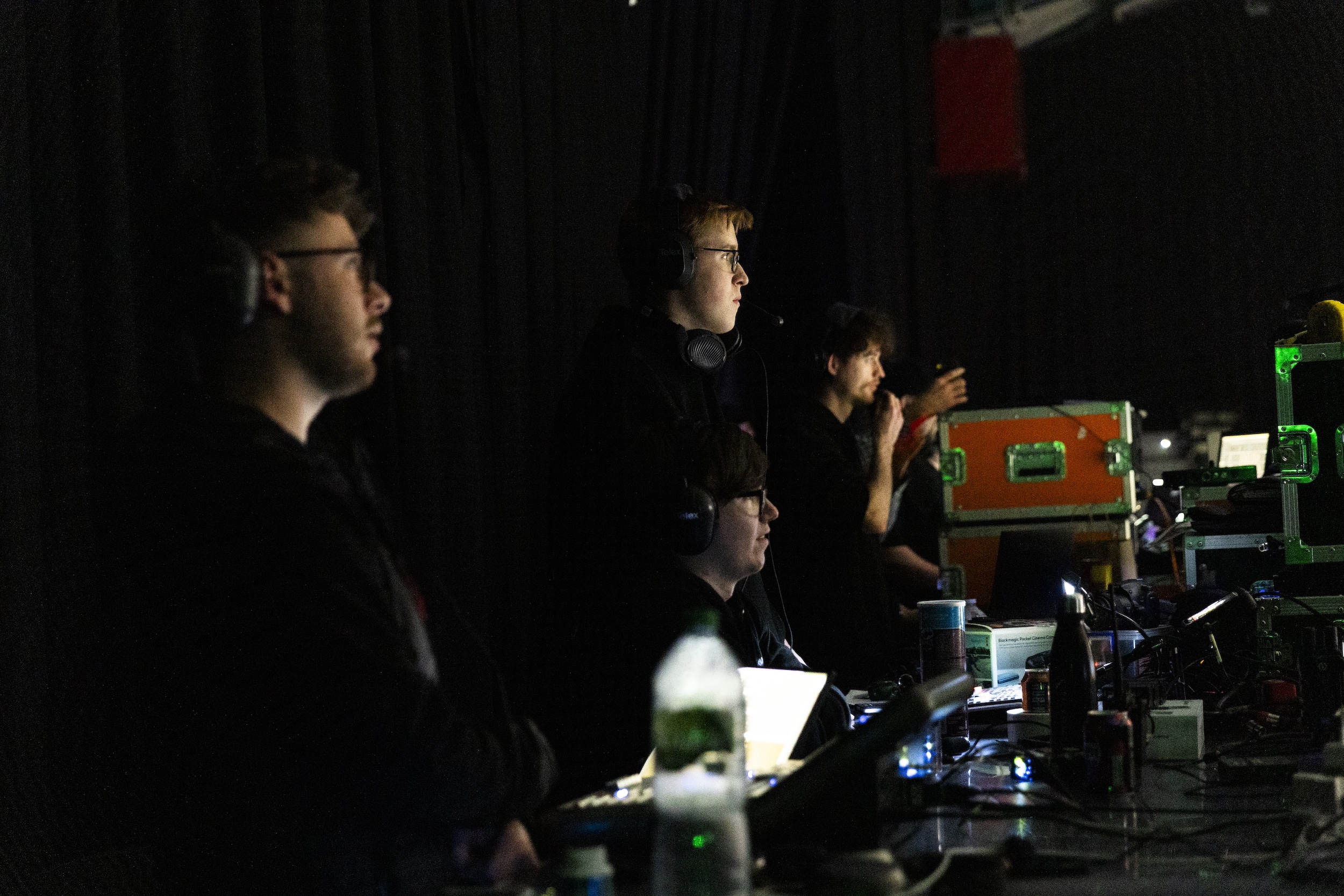
Are you excited to apply for jobs in the Creative Industries but worried you haven’t got enough experience?
The Creative Industries can be tough to break into, but writing a 1–2 page CV that reflects your personality and unique strengths will increase your chances of finding your first job as a creative professional.
Here are 10 tips from Resume Genius on how to write a CV that impresses employers in the Creative Industries so you can find a fulfilling role and kickstart your career.
1. Consider your personal brand and how you want to represent yourself
When applying for a Creative Industries job, many employers look for applicants with memorable CVs, so presenting a personal brand is a great way to establish what makes you a unique candidate.
A personal brand can be as simple as choosing a professional tone for your CV or adding more elements such as creating your own brand logo (Canva has a free logo maker) and other visuals that suit your personality.
Here are some questions to help you narrow down what your personal brand can be:
- How do you want to be known?
- What are some of your values?
- Are there any metaphors or visuals that describe your work?
- What tone of voice will you use on your CV (e.g., casual and conversational or polite and formal)
- Is there a particular colour scheme or typography you prefer?
Answering these questions sets up a solid foundation for your personal brand that’ll make you stand out from other candidates. And besides your CV, you should also make sure your cover letter, portfolio, and social media profiles reflect your personal brand.
2. Choose a well-designed format for your CV
Employers in the creative sector pay close attention to the type of CV design you’ll submit to them, so format your CV carefully and ensure it’s visually appealing and easy to read.
Research your target companies by carefully reviewing their official websites, job adverts, and social media platforms so you can gain clarity on their brand voice and expectations.
For instance, if a company has modern aesthetic, try to reflect their style in your own application. In this case, you could design an infographic CV with image elements to make your CV visually striking and show you understand the company’s brand voice. Another popular format is a video CV that introduces you to potential employers using a short video.
But if a company seems more traditional, use a standard CV format and make it neat by using bullet point lists, icons, and even graphics to organise your information.
Additionally, the typography and colours you choose are key to making your creative CV look polished, so spend time selecting the fonts you’ll use so they’ll be legible to employers.
And if you’re unsure what CV layout to go with or want to keep yours minimal, try looking at different CV templates.
3. Write a strong introduction that reflects your top qualifications
Positive first impressions capture an employer’s attention, so write a CV introduction that instantly stands out to employers in creative fields and encourages them to continue reading your application.
Your CV introduction should be 2–4 sentences long and include your name, phone number, email address, and a summary of your skills, education, and motivations for applying to a position.
A CV introduction is your opportunity to sell yourself to employers in creative disciplines and make them want to learn more about you. So, use specific details and clarify why you’re applying for your target role – you might include the company’s name in the introduction.
And even if you have no experience, you can still write a descriptive CV introduction conveying your educational background and top skills, like so:
“Imaginative and detail-oriented designer with a BA in UI/UX design from Ravensbourne University. Skilled in Figma, Procreate, and Sketch. Highly interested in micro animations and creating websites centred around accessibility and inclusive design. Seeking a responsible position as a Junior UI/UX designer at Delpin Studios.”
4. Mention your education and relevant coursework
If you’re a recent graduate, you likely won’t have much experience. But your educational details are still critical to helping employers clearly understand your technical skill set and what you’d bring to their team.
Also, feel free to include online courses or certifications you’ve done outside of school in your education section.
Here’s what to include in your CV’s education section:
- University name and city location
- Degree name and classification
- Graduation date (or when you plan to graduate)
- Relevant coursework (especially if they directly apply to your job field)
In general, you should list your secondary school details on your Creative Industries CV if you’re a recent graduate or if you have the space on your CV to do so.
These are the details you should include:
- Secondary school name and location
- A-levels and grades
- GCSEs and grades
- Date you got these qualifications (if applicable)
5. Include your accomplishments in your CV’s bullet points
Highlighting your achievements is an excellent way to get noticed when writing a Creative industries CV because employers want to know what you’re capable of doing and why they should hire you.
Your achievements can be anything from getting published in a magazine or winning an award at school. And, feel free to mention lesser known accomplishments such as teaching yourself a new skill or completing a difficult project.
Also, try using numbers like percentages, time saved, or other data to provide context to your accomplishments.
Here’s an example of a statement using numbers and specific details:
“Designed, printed, and sold 150+ watercolour Christmas cards over 3 days at the Portobello Road Market”
6. List any work, volunteer, or internship experiences you’ve done
Any previous or current work, volunteer, and internship experiences are essential to list on your creative CV because it shows that you’re willing to work hard and have valuable transferable skills for the job, such as communication or time management.
Include the name of the organisation you worked for, your job title, and a brief description of your duties using 3–5 bullet points.Here’s an example of an applicant’s internship experience bullet points to give you some CV writing inspiration:
Animation Intern (3-month internship)
Grapple Media Studios, Manchester
June 2022–August 2022
- Participated in 15 brainstorming sessions and researched industry trends and competitors
- Organised character packs and performed data entry on Excel with 100% accuracy
- Learnt how to rebuild scene layouts and successfully implement those changes with held cells and field guides
7. Showcase your skills, hobbies, and interests
As you’re writing your ‘Hobbies and Interests’ and ‘Additional Skills’ sections, think about what sets you apart from other candidates by brainstorming your interests and passions.
Make a list of any strengths, hobbies, activities, or causes you care about. After brainstorming, note any skills or projects particularly relevant to the Creative Industries so you can better market yourself to employers.
If you’ve ever worked on creative projects outside of school or work (e.g., starting a blog, designing a website, or making a script), make a note of them as well. These projects can help show employers your creative skills, abilities, and interest in the industry.
Here are some questions to assist you with brainstorming:
- Do you enjoy design, writing, working with numbers, or problem solving?
- Are you interested in fashion, art, music, or film?
- Do you have any interest in social media, marketing, or advertising?
- Do you have any creative hobbies or side projects?
- Do you have any specific skills or talents that could be relevant to the job you’re applying for?
8. Tailor your CV using keywords from the job description
One way to target your creative CV to a company is by looking for relevant keywords and using the job advert as a guide. To find the right keywords to use, look at the job listing and see what skills and experience they’re looking for.
Then, include these exact keywords to show employers you’ve taken the time to learn about their business and match the requirements to make you a good fit for the job.
As you’re researching a company’s website, look for keywords related to the company’s culture and values. For example, if you’re applying to a marketing agency that values innovation, use matching keywords reflecting that trait.
And once you’ve found the right keywords, use them throughout your creative CV, including in your CV introduction, skills section, work history, and education.
9. Proofread your CV
Proofreading your creative CV is important once you’ve finished the writing process because it ensures there are no mistakes or typos. Double-checking your work is also a good opportunity to confirm that your CV is clear and concise.
When proofreading your CV, read it out loud to help you catch any errors or typos you might have missed. Asking someone else to read it, so you can get a second opinion on your CV.
10. Save your finalised CV as a PDF or video link
You’re almost at the finish line! After you’ve produced a CV that captures your artistic vision and qualifications, save it as a PDF to preserve your CV’s layout — no matter who opens your file.
To save your CV as a PDF, open the file in a word processing program like Microsoft Word or Google Docs. Then, go to File > Save As and select PDF from the drop-down menu.
You can also use an online tool like Smallpdf to convert your CV to a PDF.
Once you save your CV as a PDF, you’re ready to send it to employers.
Alternatively, if you’re sending your creative CV in a video format, upload it using a YouTube or Vimeo streaming link so employers can easily access it without any issues.
This article was written for Creative UK by Resume Genius.
Related

